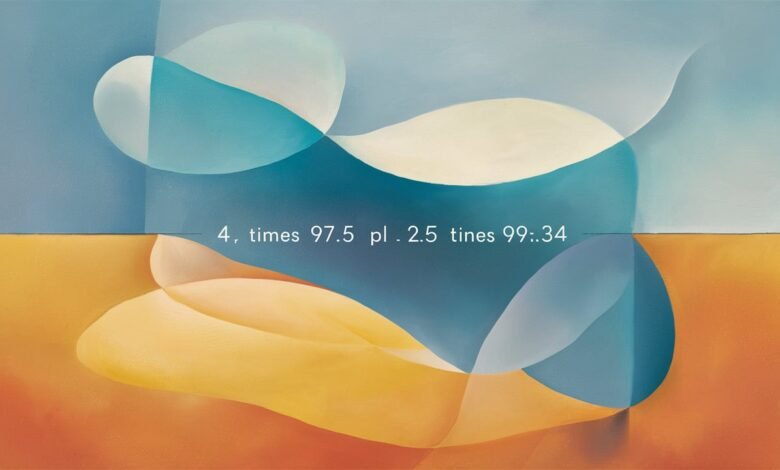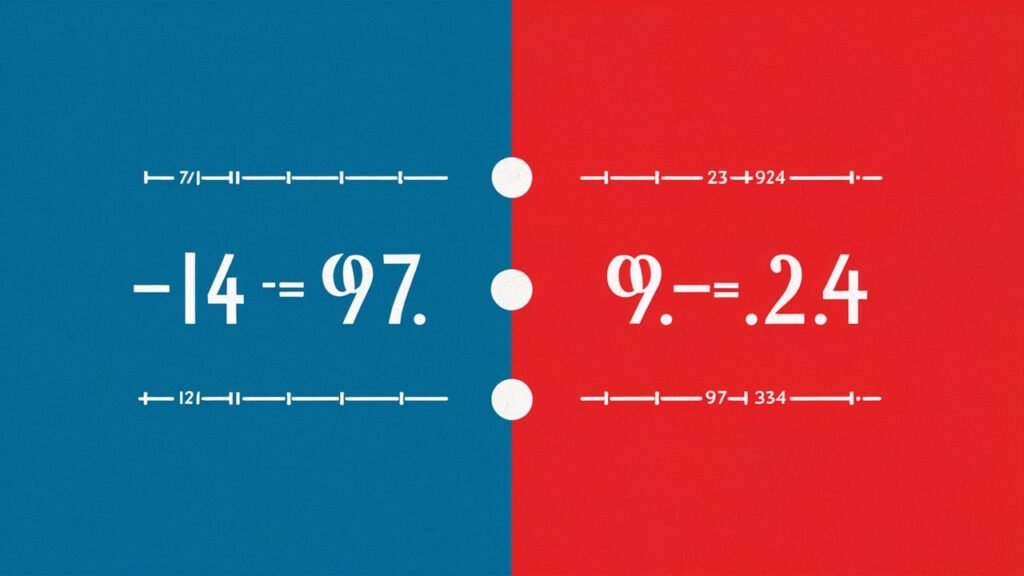Understanding the Calculation: 0.4 Times 97.5 Plus 0.25 Times 99.34

Mathematical computations often serve as a foundation for understanding more complex concepts in numerous fields. When evaluating expressions such as 0.4 times 97.5 plus 0.25 times 99.34, it’s crucial to break down each part systematically. This article explores the calculation in depth, its applications, and why mastering such equations can be highly beneficial.
Breaking Down the Equation
Step-by-Step Calculation
- Multiplication Components
- Begin by evaluating the first part:
0.4 × 97.5 = 39.0
Here, 40% of 97.5 equals 39, which is a straightforward calculation. - Move to the second multiplication:
0.25 × 99.34 = 24.835
Calculating 25% of 99.34 provides 24.835.
- Begin by evaluating the first part:
- Adding the Results
Combine the two results:
39.0 + 24.835 = 63.835
Thus, the solution to the equation is 63.835.
Why Understanding Basic Calculations Matters
Practical Applications
Such equations may appear simple, but they have wide-ranging uses in real-life scenarios, such as:
- Finance and Budgeting: Calculating discounts, tax rates, or compound interest.
- Science and Engineering: Evaluating proportional relationships in formulas.
- Everyday Life: Determining proportions in recipes or splitting bills.
Strengthening Foundational Knowledge
A strong grasp of these calculations enables faster mental math and enhances decision-making in various contexts. This is especially vital in competitive environments where precision and speed are required.

Exploring the Components in Detail
Understanding Percentages in Multiplication
Percentages are fractions of 100. For example:
- 0.4 equals 40%, which simplifies to 40/100.
- 0.25 equals 25%, or 25/100.
By converting percentages to decimals, calculations become more streamlined and adaptable across applications.
Decimals and Their Role
Decimals represent fractional numbers in base 10, making them a universal tool in arithmetic. Mastering their application in equations ensures accuracy, especially when dealing with financial or scientific data.
Expanding Applications of Such Calculations
Business and Economics
In the business world, calculations like this are used to:
- Assess profitability: Determining net gains after applying discounts or additional charges.
- Predict outcomes: Evaluating trends based on percentage-based growth or decline.
Science and Technology
- Physics: Understanding forces or energies proportional to specific values.
- Data Analysis: Computing weighted averages for data sets.
Education and Academics
Teaching these fundamentals helps students appreciate the interconnectedness of math and real-world challenges, laying the groundwork for advanced problem-solving.
Common Mistakes to Avoid
- Misinterpreting Percentages
Always ensure you convert percentages to decimals correctly. A minor mistake here can skew the final result. - Rounding Errors
Avoid premature rounding. Work with precise numbers until the final calculation to ensure accuracy. - Ignoring Units
Always check whether the numbers represent similar units, as discrepancies can lead to incorrect outcomes.
FAQs About the Calculation
What does 0.4 times 97.5 represent?
This represents 40% of 97.5, often used in determining proportional shares or discounts.
Why is understanding decimals critical in mathematics?
Decimals provide a precise representation of fractions, essential for exact computations in diverse fields.
Can such calculations be automated?
Yes, tools like spreadsheets or calculators can quickly solve such equations, but understanding the principles ensures better manual verification.
Conclusion
The calculation of 0.4 times 97.5 plus 0.25 times 99.34 illustrates the importance of mastering basic mathematical principles. These computations have extensive applications, from personal finance to scientific research, underscoring their relevance in everyday life. By practicing such problems, individuals enhance their analytical abilities, making them better equipped to tackle complex challenges.



